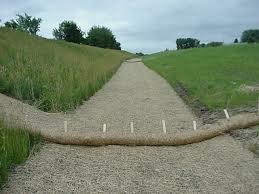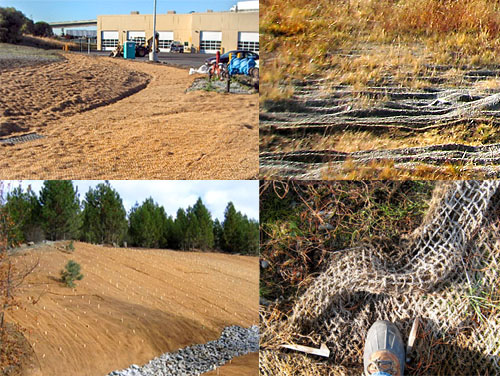Efficient Techniques by Memphis Erosion Control Solutions erosion control
Wiki Article
Best Practices for Disintegration Control in Construction Projects
Are you working with a construction job and worried regarding erosion control? Look no more! In this short article, we will certainly lead you through the very best techniques for avoiding disintegration on your site. You'll find 5 important methods, efficient debris and drainage management approaches, essential considerations for incline stabilization, and pointers for shielding plant life and soil. We'll also dive right into the value of implementing correct water drainage systems. Prepare yourself to deal with disintegration head-on and guarantee the success of your building and construction task.5 Vital Disintegration Control Techniques

To successfully regulate erosion on your building and construction website, you'll require to apply vital methods such as slope stablizing and sediment control actions. Incline stablizing is vital in stopping dirt disintegration on steep inclines. One more reliable technique is the use of disintegration control blankets or mats, which are put on the incline and help keep dirt particles while permitting plant life to grow.
Efficient Debris and Overflow Administration

You can successfully handle sediment and drainage in your building task by executing proper erosion control actions. Sediment and runoff monitoring is essential to avoid disintegration and protect the surrounding environment. One reliable action is the installment of silt fences along the border of the building website. These fences help to consist of sediment and prevent it from entering neighboring water bodies. An additional vital practice is the application of erosion control coverings or floor coverings. These coverings give a protective layer on bare dirt, decreasing the influence of rainfall and stopping disintegration. Additionally, the use of sediment basins or debris traps can aid to catch sediment and stop it from getting in stormwater systems. Regular maintenance of these actions is necessary to guarantee their performance throughout the building and construction job. This consists of cleaning up and checking debris basins and routinely changing silt fences and disintegration control blankets as needed. By carrying out these disintegration control steps, you can properly manage sediment and drainage in your building and construction task, decreasing the influence on the atmosphere and abiding with governing needs.
Trick Factors To Consider for Incline Stabilization
You need to very carefully examine the slope's attributes, such as its drainage, structure, and angle patterns. Look for indicators of erosion, such as revealed origins, splits, or down soil.One more choice is to plant vegetation on the slope, as the roots can help secure the soil and control erosion. Furthermore, mounting erosion control coverings or floor coverings can offer instant security while plant life comes to be recognized.
It's essential to routinely keep an eye on the stabilized slopes to ensure their effectiveness. Watch out for go to website any type of indicators of movement or disintegration, and take instant action if necessary. Routine upkeep, such as inspecting and fixing any kind of broken measures, is also important to ensure lasting stability.
Best Practices for Plants and Dirt Defense
If needed,One efficient method to protect vegetation and soil on inclines is by consistently checking for indications of erosion and taking immediate activity. By being observant and aggressive, you can avoid further damage and make certain the security of the slope. Start by examining the slope for any kind of indicators of disintegration, such as subjected origins, bare dirt patches, or debris build-up at click for more the bottom. If you see any one of these signs, it is essential to attend to the concern without delay. Implement disintegration control procedures such as installing erosion control blankets, mulching, or also constructing maintaining walls if required. In addition, planting greenery can considerably assist in maintaining the dirt. Choose indigenous plants that have deep root systems, as they are more reliable in preventing disintegration. Ensure to routinely examine the health of the vegetation and give essential maintenance, like watering and feeding. Remember, erosion can rapidly get worse and trigger severe damage, so it's crucial to resolve it immediately. By taking aggressive steps and on a regular basis keeping track of the slope, you can secure the plant life and dirt, guaranteeing the long-term security of the area.Applying Appropriate Drainage Systems
When it comes to managing water circulation and preventing disintegration, recognizing these variables is essential. Steeper slopes can lead to much faster water flow, raising the threat of disintegration and flooding. On the various other hand, gentler slopes enable water to flow more slowly, lowering erosion possibility.Sandy soils often tend to drain pipes faster due to their rugged structure, while clay soils have a slower drainage rate due to their portable nature. Additionally, taking into consideration the soil attributes helps stop waterlogging, which can lead to poor plant growth and damage to structures.
Final Thought
In verdict, when it comes to disintegration control in construction projects, you should adhere to these finest methods. Consider slope stabilization techniques to guarantee the stability of the website. By following these necessary visite site techniques, you can properly regulate erosion and guarantee the success of your building and construction job.To efficiently manage erosion on your building website, you'll need to implement crucial techniques such as incline stablizing and debris control steps. Incline stablizing is essential in protecting against dirt disintegration on high slopes. Another reliable technique is the use of disintegration control coverings or mats, which are positioned on the slope and assistance preserve dirt fragments while allowing plants to expand. An additional choice is to grow vegetation on the slope, as the roots can assist secure the dirt and control erosion. Implement erosion control actions such as mounting erosion control coverings, mulching, or even constructing retaining wall surfaces if needed.
Report this wiki page